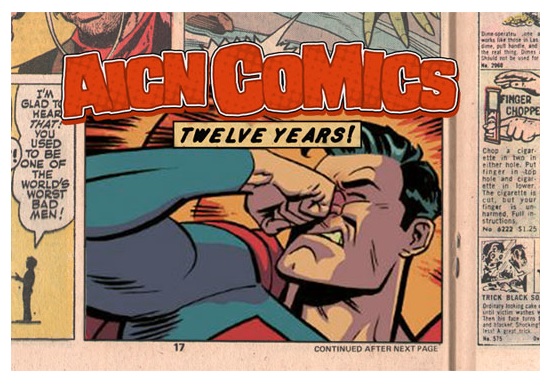
(Click title to go directly to the review)
SUPERIOR SPIDER-MAN #30
NEMO: THE ROSES OF BERLIN HC OGN
Indie Jones presents ART MONSTER #1-2
THE ABSENCE OGN
ALL-NEW X-FACTOR #5
MY LITTLE PHONY: A BRONY ADVENTURE - FANDOM IS TRAGIC #1
Indie Jones: GHOULS: THE MISSING COLONY OGN
AVENGERS #27
ROBYN HOOD: LEGEND #1
PSYCHO GRAN #1
ORIGIN II #4
Indie Jones presents LYCANTHROPY: WILD WEST WEREWOLVES OGN
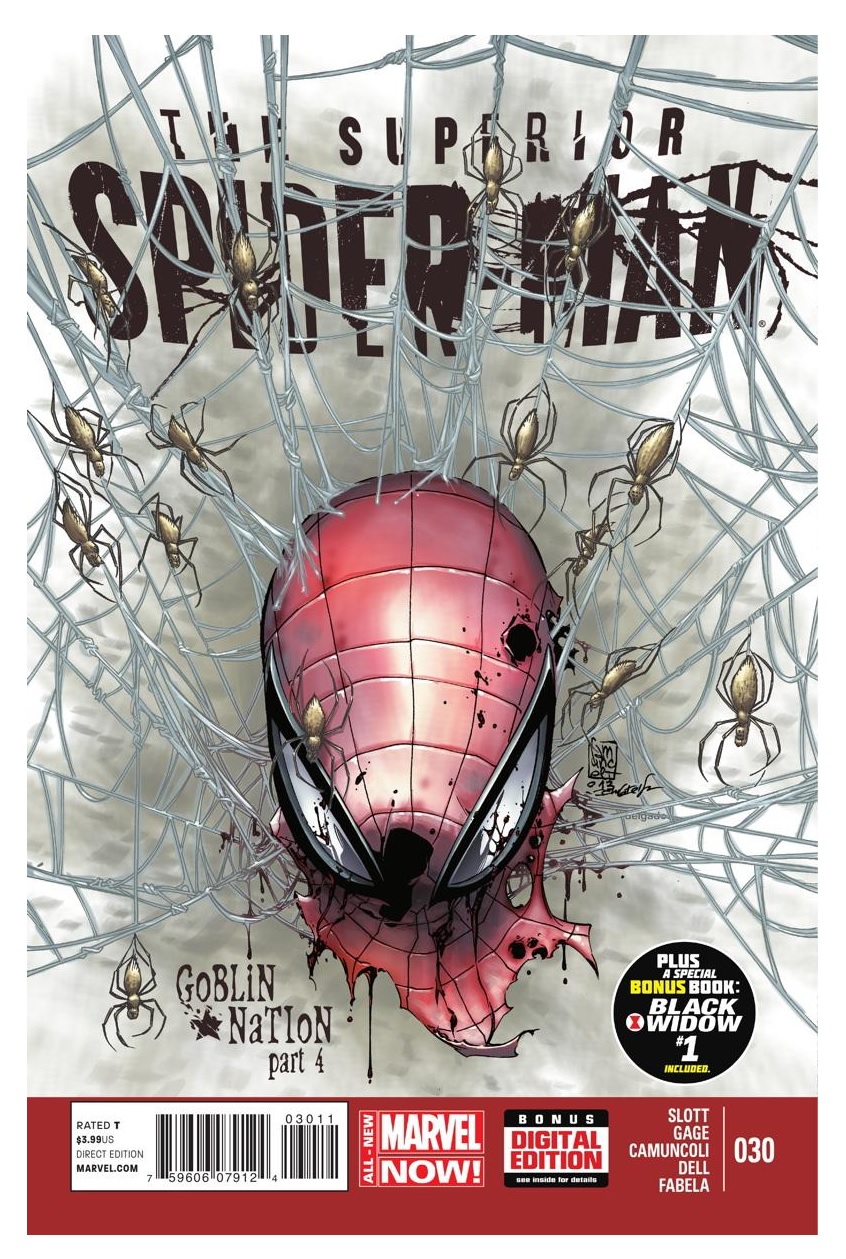
SUPERIOR SPIDER-MAN #30
Writer: Dan Slott & Christos GageArt: Giuseppe Camuncoli
Publisher: Marvel Comics
Reviewer: Mighty Mouth
Back when AMAZING SPIDER-MAN #700 premiered, writer Dan Slott fashioned an outrage when he seemingly killed of Peter Parker and allowed Otto Octavius to take possession of his body. It’s not very difficult to grasp how such an eccentric plot could ruffle fans’ feathers. But c’mon, this is comics were talking about, and highly bankable heroes never really die. SUPERIOR SPIDER-MAN #30 brings fans the moment they’ve been waiting for: Peter Parker back in the webbed saddle again.
Part four of the “Goblin Nation” story has a lot going on within its pages, starting with probably the briefest team-up of all time when Superior Spidey abandons Spidey 2099 during a clash with a multitude of spider slayers. The Avengers and other heroes have their hands full, as the city is being overrun by a goblin army. Mayor Jameson comes under fire for his connection to this fiasco, and we learn that Alchemax C.E.O. Liz Allen may not be on the side of the angels. Most importantly, Peter finds his way back to his memories, giving him the mental fortitude needed to clash with Otto Octavius once more in the mindscape.
So by now we all knew that Peter was due to make his comeback; no one should be all that surprised. What makes the narrative worthy is the way in which the events unfold. The success of this issue centers on Otto’s analysis of himself and Peter, having now spent time in each other’s heads. Otto realizes that he is not the “Superior” hero, and that his arrogance and overly analytical approach are detrimental to his ability to save the city and the woman he loves from the Goblin King’s wrath. Slott and Cage further this development to its zenith by permitting Otto one final act of redemption: a heroic sacrifice.
Giuseppe Camuncoli’s art has always been a bit hit or miss, but I have to admit SUPERIOR SPIDER-MAN #30 highlights some of his best work on the book to date, most notably with an absolutely gorgeous double-page spread that pays homage to Peter’s triumphs and tragedies over his career as Spider-Man.
SUPERIOR SPIDER-MAN #31 will be out in a couple weeks and concludes this tale. When it’s all said and done, I think even the most hateful of haters is going to have to concede that Slott accomplished exactly what he set out to do. He managed to tell a radically different story in a truly infectious manner--one that verifies Peter Parker was the superordinate hero all along. It should prove interesting to see how Parker and his supporting cast handle the domino effect of Octavius’s interval as the “not so” Superior Spider-Man.
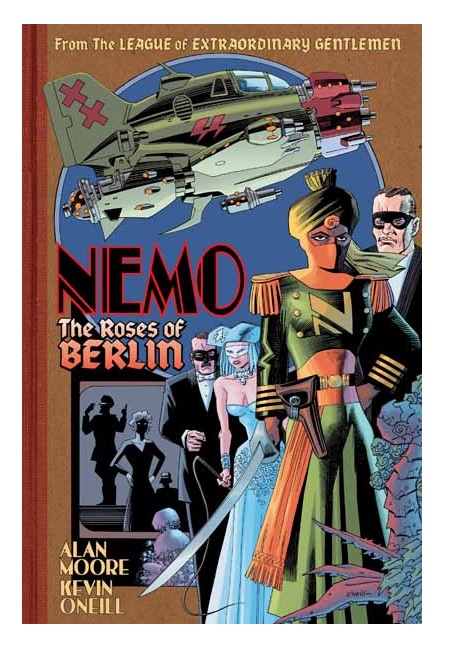
NEMO: THE ROSES OF BERLIN Hardcover Original Graphic Novel
Writer: Alan MooreArtist: Kevin O’Neill
Published by: Top Shelf Productions/Knockabout
Reviewer: BottleImp
Let’s all drop any pretense and just call a spade a spade here. At this point, there is no one who comes into a new book in THE LEAGUE OF EXTRAORDINARY GENTLEMEN series as a brand new reader. Alan Moore and Kevin O’Neill have constructed their universe of literary and cinematic characters come to life as intricately as any single novel, and for a person to immerse themselves in the story at this point would be just about as silly as jumping into “The Lord Of The Rings” midway through “The Two Towers.” The only people reading these LOEG (if I may use this abbreviation for brevity’s sake) books are those who have read the entire series up until this point, and the only question worth asking when we initiated are reading NEMO: THE ROSES OF BERLIN is: is this comic a worthy addition to the title’s canon?
The answer to this question always depends upon the knowledge possessed by the reader. With each new installment Moore tosses new literary references into his universe, and whether or not the reader is familiar with these references greatly influences his or her response to the book. For example, the previous book, HEART OF ICE, was a joy for this reader due to its Antarctic locale and inclusion of H.P. Lovecraft’s Cthulhu mythos—elements that worked great for me, since I’m a huge Lovecraft fan and also have some familiarity with Poe’s “Narrative of Arthur Gordon Pym,” an influence on both HPL and this particular LOEG tale. As for THE ROSES OF BERLIN? Well, if German Expressionist cinema of the 1930s and ‘40s is your wheelhouse, then you’re in luck.
The story itself is a straightforward actioner. The year is 1941. The new Captain Nemo (Janni Dakkar, daughter of Jules Verne’s infamous pirate) and her husband Broad Arrow Jack must infiltrate the heart of the country of Tomania, ruled by a fascist government led by a dictator named Hynkel, in order to rescue their daughter and her husband. Once inside this futuristic nightmare metropolis the pair battles sleepwalking stormtroopers, makes alliances with a criminal mastermind, and faces an ancient enemy whose presence holds hints of even greater dangers to come.
The films of Fritz Lang are front and center here, with the setting from his “Metropolis” film acting as the story’s backdrop, as well as providing a sinister element in the form of the mechanical Maria. Lang’s Dr. Mabuse also features prominently, as does the work of his fellow filmmaker Robert Wiene in the character of Dr. Caligari, the mastermind controlling the sleepwalking soldiers. “But if these German films are the background for the story,” you might ask, “why is this book not set in Germany but in the fictional land of Tomania?” For the answer to this question, just google “adenoid hynkel” and see what pops up. I’ll give you a hint: it’s another film reference, though a thoroughly American one this time.
Though these myriad references and name-droppings that Moore builds into his LOEG universe can be confusing when unfamiliar—and the author doubles down this time around by including several pages scripted in German, sans subtitles—one can always look to the trusty internet for answers. Luckily, my own scant knowledge of the cinema (along with names dropped in earlier LOEG books, most notably THE BLACK DOSSIER) allowed me to read through this comic and enjoy the story within without excessive head-scratching. As for the German passages, I am indebted to one Jess Nevins for not only offering translations but annotations here. Nevins’ notes, though not necessarily integral to reading and understanding the plot, do provide the curious reader with details that enhance the enjoyment of the story.
At this point, Moore and O’Neill aren’t looking to baptize brand new readers into the cult of the League—they’re just giving a little more League to the readers who have been long indoctrinated. If you’re one of us (“one of us, one of us,” as the chant goes) then THE ROSES OF BERLIN will almost certainly satisfy that craving for exotic adventure mixed with tidbits of trivia from high art all the way down to pop culture. If you’re not a member of the club, just walk on by.
When released from his bottle, the Imp transforms into Stephen Andrade, an artist/illustrator/pirate monkey painter from New England. He's currently hard at work interpreting fellow @$$Hole Optimous Douche's brainwaves and transforming them into pretty pictures on AVERAGE JOE, an original graphic novel to be published by Com.x. You can see some of his artwork here.
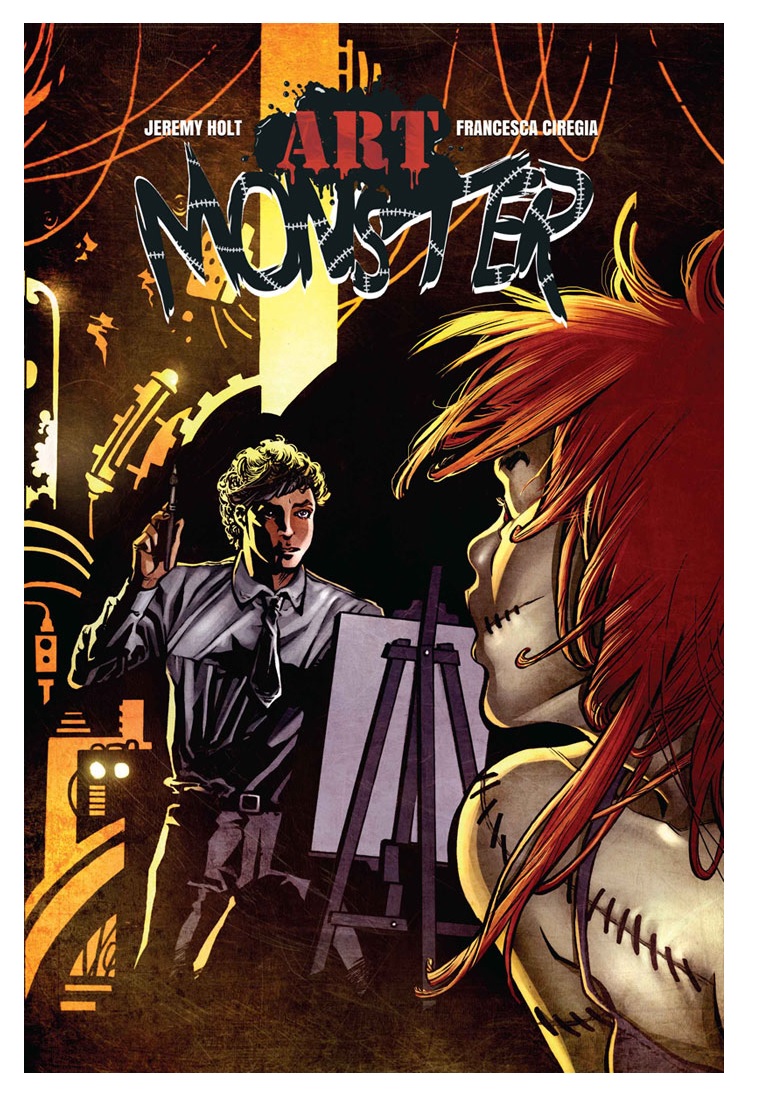
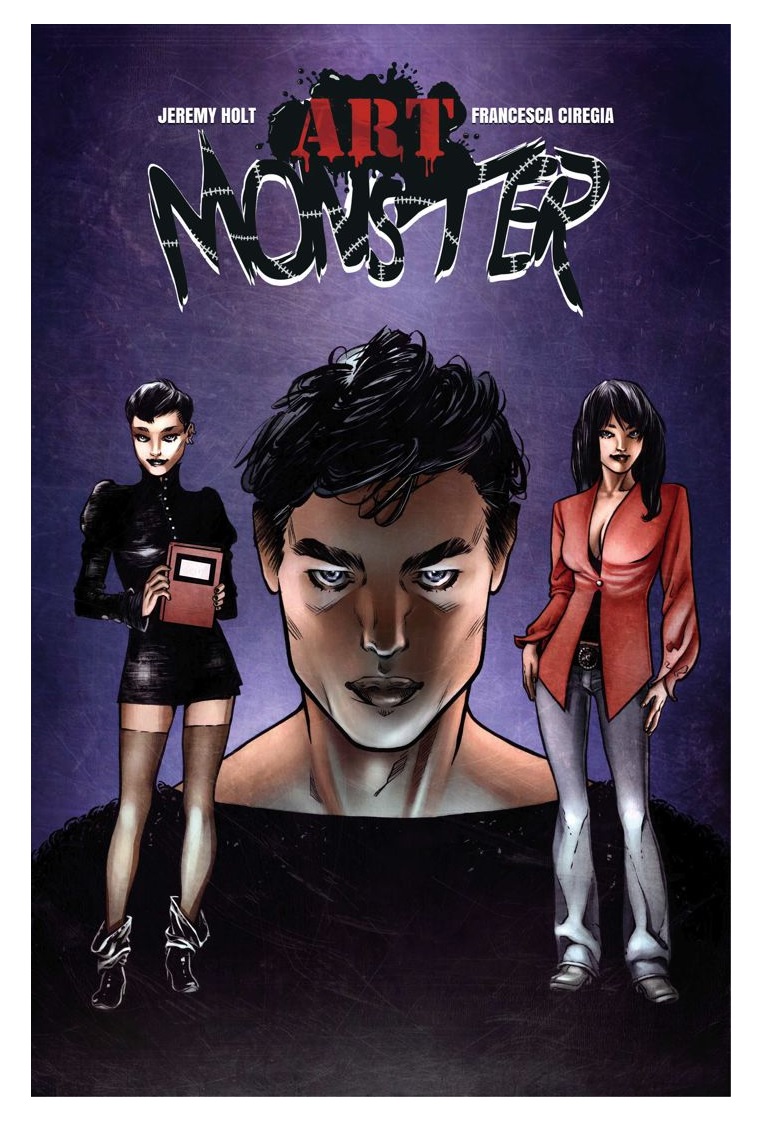 Indie Jones presents!
Indie Jones presents!ART MONSTER #1-2
Writer: Jeremy HoltArt: Francesca Ciregia
Publisher: MonkeyBrain /Comixology
Reviewer: Ambush Bug
The first two chapters of Jeremy Holt’s new series ART MONSTER play out pretty perfectly. Swiping bits and pieces from Mary Shelley’s classic FRANKENSTEIN story, Holt has transferred subject matter from science to art. And while the title of this book may suggest something more akin to Corman’s classic A BUCKET OF BLOOD (, a film I reviewed over in AICN HORROR here), it seems to be heading more towards schmelting body parts together than encasing them in plaster as Dick Miller did in Corman’s classic.
The story follows Victor F. Stein (I groaned a bit too at that name, I must admit), who is in a bit of an artistic rut. Having spent seven years in art school, he’s to the point of expulsion due to his lack of focus, but inspiration cannot be rushed. A chance meeting with an elegant woman at an art show which showcases the mixing of dead animals with machinery (plus a lot of alcohol) proves to be a potent mix of inspiration for Victor, who wakes up the next day inspired.
While I don’t know where this story is going from here, I can imagine it’s going to get dark, and this take on the original Shelley tome is enough of a departure to keep me interested. Seeing how far Victor is willing to go is going to be fun as Holt has realized a character that I, as a former art student who found myself in the same situation many moons ago at The Ohio State University, can definitely relate to. I didn’t end up making a person out of spare body parts though, if you’re wondering.
The art by Francesca Ciregia is enchanting. There’s a soft Gene Colon-esque style to her drawings, and for an indie book the consistency and depth of these black and white pages are pretty remarkable. These first two chapters are a lot of set up, but Ciregia keeps it all interesting to look at. There’s an especially effective dream sequence in the first chapter, where Victor is passed out in a room and the walls begin to be covered with alcohol coming from Victor’s lips which eventually reach the electrical outlet. It’s visionary impacts such as this that keep the pace moving even when things get a little wordy.
ART MONSTER is a strong story with an intriguing premise. If you’re a lover of all takes on the Frankenstein story, you’re going to want to check it out at MonkeyBrain /Comixology. It’s definitely something worth seeking out.
Ambush Bug is Mark L. Miller, original @$$Hole/wordslinger/writer of wrongs/reviewer/interviewer/editor of AICN COMICS for over 13 years & AICN HORROR for 4. Mark’s written THE TINGLERS & WITCHFINDER GENERAL, DEATHSPORT GAMES, NANNY & HANK (soon to be an Uptown 6 Films feature film), Zenescope’s GRIMM FAIRY TALES Vol.13, UNLEASHED: WEREWOLVES, and the critically acclaimed THE JUNGLE BOOK and its follow up THE JUNGLE BOOK: LAST OF THE SPECIES. FAMOUS MONSTERS’ LUNA: ORDER OF THE WEREWOLF (co-written with Martin Fisher) will be available soon in trade. Mark wrote/provided art for a chapter in Black Mask Studios’ OCCUPY COMICS. Follow Ambush Bug on the Twitters @Mark_L_Miller.
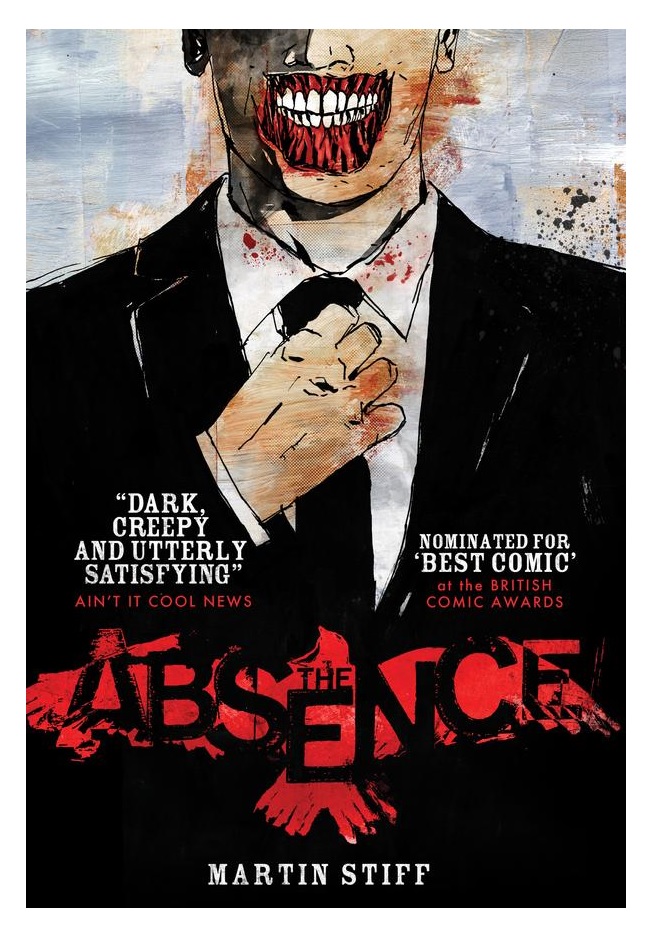
THE ABSENCE (OGN)
Artist & Writer: Martin StiffPublisher: Titan Comics
Reviewer: Optimous Douche
While it plays on many levels, the crux of THE ABSENCE is filling voids. Voids in the world and voids in the human condition. We are always looking to fill things to bring order to the world. We fill landscapes, we fill ourselves with knowledge, we fill our days with activities, since absence and nothingness sit at the foundation of all our fears of existence. When we can’t escape nothingness, as with death, we make up things like religion to ensure that something will always be and we will always be something.
Martin Stiff plays this concept to the nth degree in THE ABSENCE. In what appears to be a story about a man who is simply absent of a mouth (he has teeth and gums, simply no lip flesh to hide this grotesquely gaping maw), we quickly learn that Stiff is a writer who plays with physical embodiments to unravel metaphysical truths.
Set just after WWII, THE ABSENCE takes place in a sleepy little town in the north England countryside. It’s the typical small town story, a populace never content to be there, but not malcontent enough to escape. Well, except one man--our lipless protagonist Marwood Clay. Clay came back from the war with his deformity, but was a suspect citizen due to the mysterious fire that burned down his home with his wife and unborn child inside a few years prior.
There’s another man of mystery in the town as well--one Robert Temple. Temple is here to build his dream home, an establishment that looks more like a construct of our 9 planets (remember, this is WWII, when Pluto still counted), then the other quaint abodes that live at the bottom of the hill.
Initially I thought this would be a book about faith. In the beginning Stiff does a good job of driving the plot forward around the shambles of an old church where the townsfolk go for solace, even though none of them are happy about it. However, the church is merely in place so Marwood can perform his first miracle of jumping the chasm that forms between the mainland and this house of God. It was at this moment, halfway through the title, I realized I knew nothing about THE ABSENCE even though the characters were already a part of my life.
In addition to Marwood and Temple, there are a host of townsfolk, so for a time I thought these two men were there to fill the absence in their lives, especially a young boy looking to fill the absence of a father and young woman looking to fill the absence of a life of solitude. It’s through the interaction the two men have with these people that they are drawn together. It is also through the disappearances of townsfolk that we learn at least half the crux of THE ABSENCE.
I’m walking a fine line here. I want to entreat everyone to read this six issue compilation in hardcover form without giving away the surprises that are in store. Yes, the naturalistic dialog, intricate black and white pencils and Stiff’s reverence for the time period from style to sayings are worth the price of admission, but it’s the ci fi twist that makes THE ABSENCE a true comic book as well as a great story.
Let’s just say my whole diatribe about holes in the beginning of the piece is part of the reason the townsfolk keep disappearing, where the hole in Marwood’s face is indicative of a time when Marwood and Temple met once before. Again, though, neither man is who they seem. Marwood’s visions of German surgeons have nothing to do with Nazis or being captured. Likewise, Temple was never a Nazi--just a very smart man who has an uncanny knack with numbers that fill the great hole of the 4th dimension.
You know what? I will give one hint about Temple’s abilities. However, you must be fellow friend of Asimov to get it. If you ever read the Foundation novels that were part of Asimov’s sweeping account of future history, Temple and Harry Seldon have the same ability - except Temple can do it all in his head. Now if you just got this clue without Google, bravo, but there’s a whole other plane THE ABSENCE plays on that you will simply have to read to believe.
Optimous Douche has successfully blackmailed BottleImp to draw purty pictures for his graphic novel AVERAGE JOE coming out in 2013 from COM.X. When not on Ain’t It Cool, Optimous can be found talking comics and marketing on robpatey.com and just marketing on MaaS360.com.
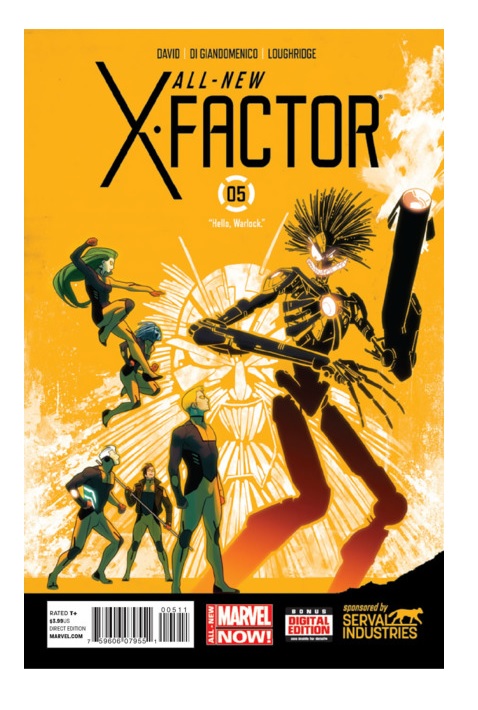
ALL-NEW X-FACTOR #5
Writer: Peter DavidArt: Carmine Di Giandomenico
Publisher: Marvel Comics
Reviewer: Humphrey Lee
Despite me being one of those assholes who insists that he only watches/reads/plays the best media, I am a man who is also a sucker for TV shows (and sometimes comics) where while the plotting may be so-so I’ll stick around for energetic and charismatic characters as long as they are doing interesting things. This includes the “Castle”s and “The Blacklist”s with those magnificent bastards that are Nathan Fillion and James Spader eating up scenery while there are plots gathering in the background that…okay, I have no fucking clue what they’re doing. But that doesn’t matter, because these people entertain me and their antics are solid even if the devices around them are not so much. That sentiment, dear readers, is basically how I started feeling about the previous volume of X-FACTOR down the last year and a half or so of its tenure. While there were character moments abound that kept me into the series, the whole Hell saga and storyline around Wolfsbane’s demonspawn child and just the sheer length of it all, it just was not a prime way for that book to go out, but I kept coming back for the character bits. Now that the team is back in business, literally, I was hoping a new sheen on the book would also freshen my opinion of it. Five issues in, though, and I’m not quite sure I’m feeling so fresh and so clean clean.
Getting the big plus of this reimagining out of the way, this is the kind of X-FACTOR character writing that has made the title appealing any time PAD’s non-abbreviated name graces the title page. Just because we’re back in a sponsored setting with the team – this time corporate-backed instead of government – doesn’t mean the character interactions have become any less snappy and/or absurd, especially now with the addition of Danger to the group. Her awkward and sexually charged (I guess?) interaction with Gambit to kick off the pile of shenanigans that is this issue shows PAD still has the touch when it comes to hijinks. Danger is the perfect straight person for this kind of title, as her innocence and confusion at the human behavior around her plays infinitely better than when the jokes were abounding around a seriously moody Polaris. And Mr. David continues to write the best incarnation of Quicksilver out there, playing up his arrogance and impatience to just the right levels but occasionally giving a glimpse of his actually giving that fuck he constantly pretends to given none of so you can find yourself enjoying the guy the 10% of the time you aren’t marveling at him being 90% smarmy prick. So, if you are like me and the cast and their interactions are what drives the majority of the interest in a book like this, then this ALL NEW variation has your back in that regard.
Now, if you’re also like me in that you found the plots from the prior series lacking to the point where they kind of affected how much you valued visiting those characters each month, then I can only really say that I think the jury is still out there. The main thrust of what’s going on around our band of miscreants is the machinations of the Serval company they find themselves working for, and what rabbit hole that takes us down. For now it’s just typical levels of mistrust toward their actions and what seems like blatant overcompensating to soothe their fears by Serval CEO Harrison, and that is pretty boring in all of its expectedness. This relationship has been the driving force of the team’s missions so far and, honestly, those have been kind of boring as well. Basically, the team has been on a rescue mission in the first two issues and then to Thieves Island – a thing I had no idea existed – because of, uh, reasons basically in the last two issues, leading to Danger now being on the team. This issue’s main thrust with the plot building is in the form of more business related you would expect - and in fact that I would say I would like to see someone really get deep into because I feel corporate superheroes really don’t get as dirty as they could because they involve a politics most mainstream books do not want to touch – and that is a meeting with a rival CEO who looks to take over Serval in traditional backroom business means, i.e. a buyout. This rival CEO is then impaled by a very frustrated and irate Danger and turns out to be Magus and then Warlock shows up and even my brain that’s been processing X-MEN comics for a solid bit of the past twenty years isn’t quite sure what the bloody hell is transpiring before it. The action and the banter carried me past it, but going from somewhat standard plot thread affair to continuity I’m not particularly up on was not exactly an improvement.
That leads us back to my overlaying synopsis here: that it’s almost all banter and characterization carrying this book right now and, depending on your perspective, that may or may not be enough, especially now that that these interactions are a dollar more each issue these days. And, honestly, it could probably be argued that’s just what monthly superhero comics predominantly are in a generalized form: mild storytelling that you endure because of the characters inside of the box they form. After so many years and stories there’s only so much you can do, right? Especially because these are characters that are already in a different box of their belonging to someone else most of the time. So if that’s our baseline (because in addition to lots of comics and TV I consume lots of statistic-loaded documentaries like I’m doing in the background now, and I get all super-analytical) then, yes, ALL NEW X-FACTOR generates character moments and interactions on a level significantly better and more enjoyable than a lot of its peers on the shelves. It is that “Castle” to the “CSI Miami” pieces of derivative it rides alongside. If that is what you are into, plus you are looking for a hint of storytelling “upside,” (I play fantasy sports too everyone!) with that potential for beyond the norm arcs, which I think the last volume of X-FACTOR reached several times, then this is a book worth diving into. Unfortunately, if you’re looking for that proverbial “something more,” I’m not quite sure yet that this version of the team is what you’re going to be into, and that genuinely sucks for me to say.
Humphrey Lee has been an avid comic book reader going on fifteen years now and a contributor to Ain't It Cool comics for quite a few as well. In fact, reading comics is about all he does in his free time and where all the money from his day job wages goes to - funding his comic book habit so he can talk about them to you, our loyal readers (lucky you). He's a bit of a social networking whore, so you can find him all over the Interwebs on sites like Twitter, The MySpaces, Facebookand a blog where he also mostly talks about comics with his free time because he hasn't the slightest semblance of a life. Sad but true, and he gladly encourages you to add, read, and comment as you will.
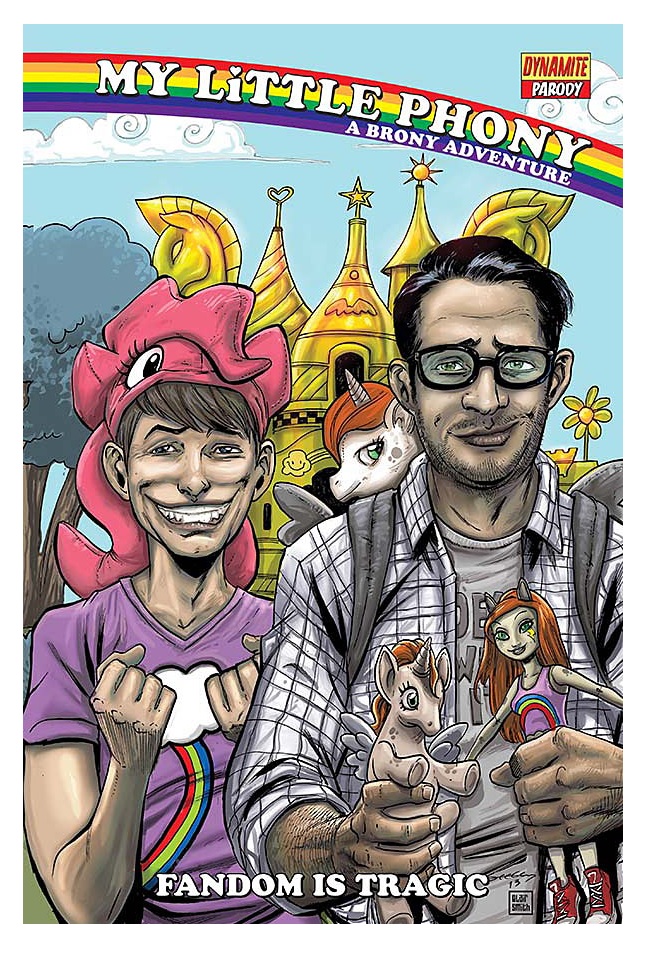
MY LITTLE PHONY: A BRONY ADVENTURE - FANDOM IS TRAGIC #1 (One Shot)
Writers: Mike Moreci & Steve SeeleyArtists: Ken Haeser & Kewbar Baal
Publisher: Dynamite Entertainment
Reviewer: Optimous Douche
It took Clydesdale-size balls to write and publish this book, so to all involved I applaud you.
Simply based off the title, I gleefully tore into this book to watch a Brony bashing. The old man in me honestly found the Brony phenomenon endearing in its inception. It was a few men that earnestly wanted to connect to the little ladies in their lives who loved My Little Pony. I was also enamored with the fact another 80s staple had captured the next generation (take that shit, Strawberry Shortcake).
Then, like all good things, fandom found a way to cheapen this sweet outreach of a few good men to every fucking pervert who was never loved by their parents. Now we live in a world with everything from Brony hair braid extensions to Brony buttplugs. Bravo, humanity--you never fail to disappoint.
MY LITTLE PHONY is not just an indictment of the Brony phenomenon, though; it’s an indictment of anyone who has let fandom of anything become an all-consuming affair.
To avoid copyright entanglement, while still keeping things in the realm of believability (at least in the beginning of the book), we have replaced My Little Pony with My Little Horsey. Not the most imaganitive fix, but it works. Our setting is SDCC, where the newly modernized version of this 80s staple is about to be premiered.
This new CG version is both revered and reviled. The naysayers are typical 40something fangeezers who can’t let go of yesterday. On the pro side are the 20something hipsters, who think just because you mash a bunch of old shit together you have created something new and soooooo original.
While the two sides clashed, it was clear you could take the noun Horsey and slap it onto almost any area of geekdom: Transformers, Smurfs, Jem…hell, even New 52 or Marvel Now. There’s a fine line between reverence and aping, just as there is an even finer line between updating and change so monumental there is nothing left of the original.
Sadly, there’s no answer here--merely opinions. As my father always told me, “opinions are like assholes and 99% of them stink, yours included.” As we all know, though, these mere words can incite feuds both online and IRL that can last decades.
In MY LITTLE PHONY the boys take the ire of fandom straight to the worst-case scenario – Armageddon. How they get there is hilarious, and I refuse to ruin it. I’ll just say that in order to be the alpha and omega of Horsey cosplay, hipster and fangeezer alike end up inadvertently making famed verses of Revelations finally come to fruition. It was during these grafts and alterations the art talent in this book had their chance to shine.
I’m not sure if other Dynamite parody titles exist or are in the works. If not, I’ll write them. This is a damn good idea that, when done well like MY LITTLE PHONY, delivers laughs and a morality lesson none of us should ignore.
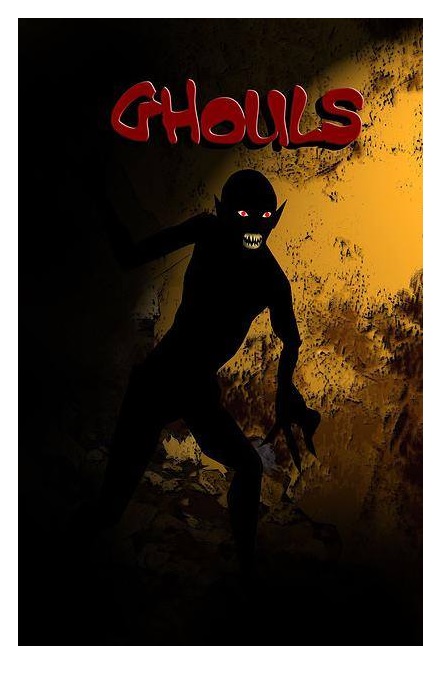 Indie Jones presents!
Indie Jones presents!GHOULS: THE MISSING COLONY ORIGINAL GRAPHIC NOVEL
Writer: Richard KellyIllustrator: Unlisted
Publisher: Self-published
Reviewer: Mr. Pasty
One of the perks of reviewing comic books or graphic novels from big-time publishers is not being concerned with other people's feelings. I've taken a digital dump on Marvel in the past and nobody cared, because most of its titles will sell, regardless of what I think. But things tend to get weird when you start talking about the little guy. The "indie scene" is sort of a broad term used to generalize any and all creators not housed by the major players, but sometimes you have one guy (or gal) with nothing more than a great premise and a few bucks to try to make it work. And more often than not, as a reviewer, I try to help them along by accentuating the positives.
GHOULS: THE MISSING COLONY will enjoy no such charity.
Creator Richard Kelly was inspired by the lost colony of Roanoke, an English settlement that went missing in the 16th century and which, to this day, still stands as one of history's greatest mysteries. 90 men, 17 women, and 11 children vanished without a trace. What happened to them? The fact that no one knows -- and will likely never know -- gives artists the creative license to explain it however they want, without any of those pesky facts to get in the way. But just like the citizens of Roanoke, any positive feedback I had for GHOULS has unexpectedly disappeared.
For starters, it's very difficult to take a book seriously when it has not been edited. I was astonished at the number of grammatical errors. Nothing takes a reader out of the moment quite like an apostrophe that has gone into business for itself. But even if we put that aside, GHOULS is completely void of anything remotely engaging. We start in the ancient village of Roanoke with a couple of people talking. Ghouls show up and eat them. Fast-forward to present day and a couple of new people are talking. Then ghouls show up and eat them, too. Why they waited 500 years between meals is a mystery, in the same way this entire book is a mystery. What was the point of writing it? To say that ghouls ate the Roanoke colonists? I'm legitimately baffled as to what the intention was here, because there is no attempt to give any kind of insight into why these re-imagined events have taken place, or why we should care about anyone involved. It's not just poor writing; it's poor storytelling.
That brings us to the illustrations. Kelly revealed he "hired artists" for GHOULS and if that's the case, he should demand a refund. The artwork is vapid and ugly and, as strange as it sounds, gets worse as the book progresses. Misshapen bodies, blurry backgrounds, clumsy layouts...my eyes were all over the place. There is nothing redeeming about this book from start to finish, and it pains me to say it, because I love to root for the little guy. But this kind of shoddy effort is a poor reflection of what the indie scene is capable of producing. Just because you have a story and the means to produce it does not mean you should. Maybe this sounds like harsh criticism, but after reading GHOULS a couple of times, I just cannot accept that Kelly had a story he wanted to tell, tried really hard to make it special, and somehow missed the mark. This book reeks of laziness, incompetence, or perhaps ignorance of one's own creative abilities. Either way, it should be avoided at all costs.
Web heads who can’t get enough of Mr. Pasty’s word vomit are encouraged to watch him operate as Nostradumbass over at MMaMania.com here. Love, hate and Mafia Wars requests should be directed here.
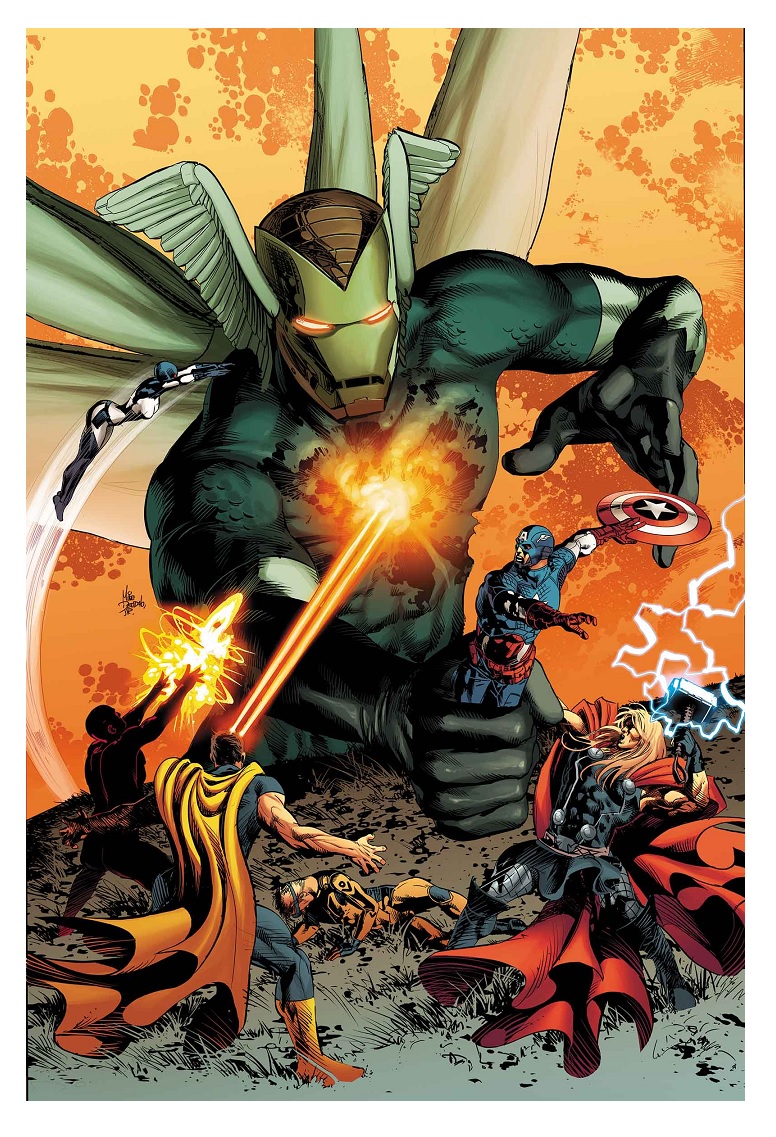
AVENGERS #27
Writer: Jonathan HickmanArtists: Salvador Larroca
Publisher: Marvel Comics
Reviewer: Masked Man
At the beginning I found Hickman's run rather boring, and have been only reading UNCANNY AVENGERS. But seeing old school villains A.I.M. (Advanced Ideas and Mechanics) have taken center stage (they've been in the background from the start), I thought I'd give the AVENGERS another try.
To a degree, it seems like Hickman has wandered into DC territory. The basic plot appears to be that A.I.M. has started exploring the multiverse and accidentally unleashed an unkinder, ungentler Avengers on 'our' world. While not quite the Offenders (my now copyrighted name of the evil version of the Avengers on Marvel Earth 3), any long-time Justice League reader can easily see a mean-spirited Avengers from another Earth as a typical JL concept. Also, A.I.M. has created a new line of Adaptoids (explorer class- whatever that means) who have developed a mind of their own and look very much like DC's blue O.M.A.C. robots from back in the INFINITY CRISIS days. Despite the DC comparisons, I find this much more interesting than the whole Builders arc (the all-powerful, unstoppable ancient aliens that the Avengers just simply punched out in the end--surprising that no one ever punched them out before).
Now in this specific issue, the cover does not reflect the action at all (I'll never understand why companies do that; it's not like a generic pin-up, either). What does happen is a showdown between both teams of Avengers. And as Thor punches Thor, we also learn about the little differences between each character,like their Iron Man is not Tony Stark (again, think FOREVER EVIL)--and is it just me, or did his helmet come off a bit too easily? Meanwhile, A.I.M. is trying to figure out how to clean up their mess without anyone (i.e. The Avengers) learning what they have been up to. Elsewhere, the Adaptoids have gone off multiverse exploring on their own. As you would expect from an alternate version story, this issue was quite a bit of fun. Some of the A.I.M. scenes were a bit cliché, but when you're talking old school villains like them, that can just be part of the fun (sidebar--you know how some people always talk about how Batman should kill Joker because blah, blah, blah, look at the history? Well, how the hell do evil organizations keep finding people to work for them, given the history?). I'm curious to see what the Avengers do when they discover what A.I.M. has been up to, and even more curious about what fresh hell the Adaptoids have in mind for everyone (I'm guessing it will be along the lines of humans are flawed therefore...).
NEW AVENGERS artist (ah, new artist, not NEW AVENGERS artist, ah--never mind) Salvador Larroca does a bang-up job with this issue. I really enjoyed seeing the 'not really evil' Avengers dressed in their classic look. It makes most of these new outfits look overly complex and bulky, but I guess that's in. But really, that new Iron Man suit has got to go. It looks about as good as the old silver and red suit: not at all. And do I have to mention Captain Marvel with the ugly mask and blond mohawk again? I know Marvel doesn't want her to be sexy anymore, but does she have to look like an idiot? Well, really bad costumes aside, Larroca does a good job with all the action and storytelling. His figures are all properly heroic looking too, which is good of a superhero book.
So if your like me and you were put off by the bore and empty pay-off of the “Builders” storyline, you may want to give the AVENGERS another try here. The current storyline is not only well written and well drawn, it's fun and interesting too.
P.S.- There's a nice INVADERS preview in this issue too.
Learn more about the Masked Man and feel free check out his comic book GOLD STAR, CINDY LI: THREE OF A KIND and CAPAIN ROCKET at www.Toonocity.com
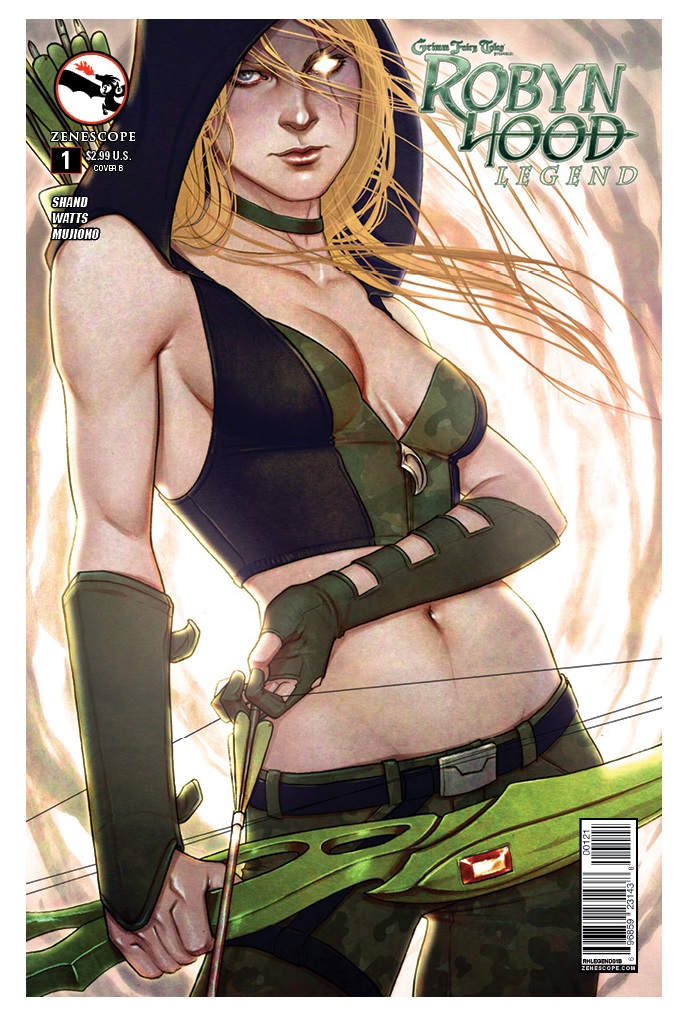
ROBYN HOOD: LEGEND #1
Writer: Pat ShandArtist: Larry Watts
Publisher: Zenescope Entertainment
Reviewer: Lyzard
One of the reasons why I have stuck more to reading indie books rather than the big names like Marvel and DC, beyond originality factor and topics going beyond superheroes, is that diving into a series like THE AVENGERS or WONDER WOMAN usually requires a decent amount of background knowledge. This may not be true for all major superhero comics, and thanks to the new DC 52, catching up with the adventures of Aquaman and Batman isn’t as daunting as jumping in midstream to an ULTIMATE SPIDERMAN or UNCANNY X-MEN run.
While Zenescope series don’t go as far back as most storylines you’d find with a Marvel or DC plot, their Grimm Fairy Tales universe is rather expansive. I’ve covered a few GFTs here and there, never really tracking the same story for long. That being said, despite the overlaps that have become more apparent the more I review them, I find GFT comics easier to just pick up and go in comparison to the big publication houses’ works.
For instance, ROBYN HOOD: LEGEND #1 is part of Volume 3 of the Robyn Hood Trilogy. I know nothing about the previous volumes besides the introduction given to me in the credits page. It isn’t until I finished the issue that I understood how well-written and beneficial this was, in comparison to other recaps I’ve read before. It doesn’t mention all the characters from the past that will now interact with Robyn or explain any crossover connections to the rest of the GFT world, but that’s not a negative. I don’t have to waste time reading dense texts recapping Robyn prior adventures; it works as a quick refresher.
In fact, more so than past GFT books I’ve reviewed, the actual comic reveals a good amount of backstory as well. I didn’t find myself flipping back to the credit page trying to remind myself who betrayed who or which guy killed that other guy. It may seem that I am placing way too much emphasis on an aspect of the comic that doesn’t have to do with the actual issue, but I think we can all agree that the industry is in great need of new readers, and it is comics like this that can just be picked up on a whim.
Of course, the comic has to be good as well to keep new readers around, and though ROBYN HOOD: LEGEND #1 isn’t great, there aren’t any major detractions I can make. I mean, obviously it features the typical impractical outfits that one has come to expect from a Zenescope comic, but artist Larry Watts has a talent for portraying emotions that takes your eyes away from the exposed midriffs and cleavage to the expressive faces. As noted earlier, the writing provides plenty of background information, but the delivery is heavily expositional and Robyn’s thoughts have little in the way of a natural cadence. The dialogue as well can be overwrought, but there are enough witty lines (from all but Robyn) to make up for the info-dumps.
Robyn may be the weakest component of her own comic, but ROBYN HOOD: LEGEND #1 is one of the strongest Zenescope first issues I’ve covered in the past few years.
Lyzard is Lyz Reblin, a graduate student at the University of Texas pursuing a master's degree in Media Studies... which is just a fancy way of saying she plays a lot video games, watches far too many horror films, and then tries to pass it all off as "research."
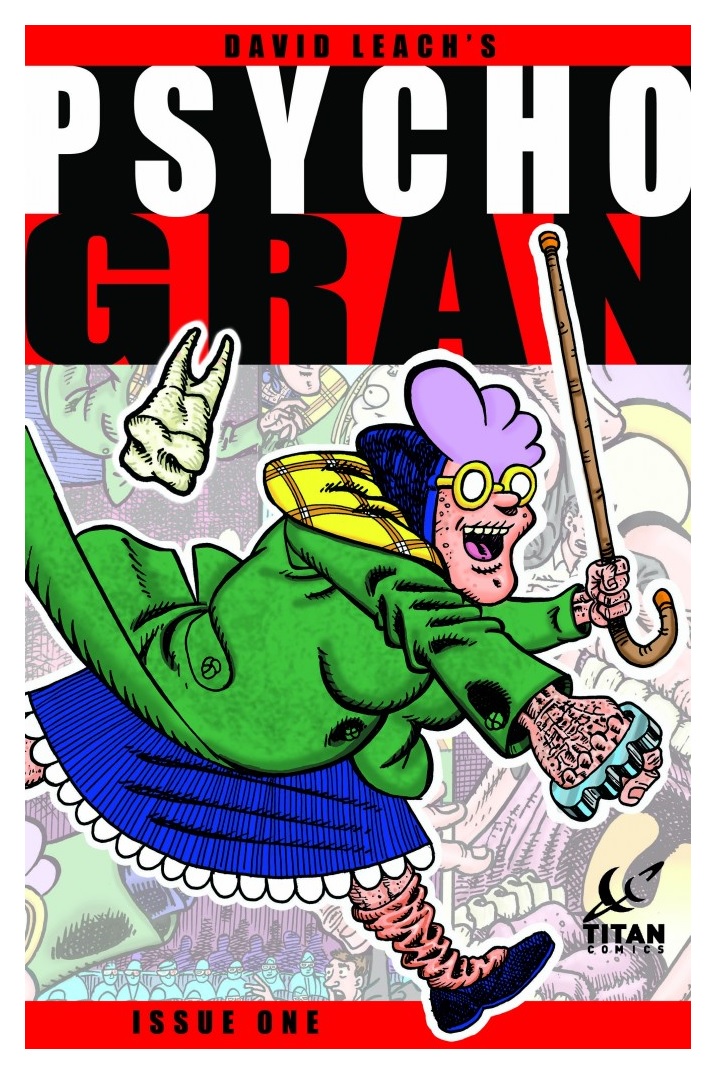
PSYCHO GRAN #1
Artist & Writer: David LeachPublisher: Titan Comics
Reviewer: Optimous Douche
There’s a definitive audience for PSYCHO GRAN 1. David Leach definitely knows comedy, but it’s comedy in the par-um-pum one liner sense. I grew up in the dark ages, where comedy is situational and very often laced with very dark undertones that are more schadenfreude . Leach plays opposites for surprises, but there is far too much joie de vivre to call this my kind of book.
However, I decided to review PSYCHO GRAN for two reasons: I admire those who find the value in strip-based vignette-like books. Those folks who chortle at even the most obvious of one-liners find a joy in life I can never understand. I also have the utmost respect for Leach’s past work on the “Wallace & Gromit” comic strip and his current work as the editor of ADVENTURE TIME magazine. You don’t get funnier than those series, and quite honestly PSYCHO GRAN is a great premise. I am not the sole barometer of comedy, so I give to you something vastly different than my usual Douchey wheelhouse.
Psycho Gran is a lady that everyone with a boring and doting Grandmother wishes they had. For those with a psycho gran of their own, this might be a little bit like a flashback, so please just close the book before your PTSD kicks in, cause this li’l lady is authentically a bawdy embarrassment.
From T-Rexes to professional wrestling, there isn’t a realm of imagination Gran doesn’t traverse. She even eats a dog in one strip. Never a victim, she turns tables with ruffians and courtesans with the same candor and frankness that most Grans only use to ensure they are given their senior discounts.
Now, just to be clear, Gran is also not some Catskills stan- up act. Leach has some definitive gripes about society that he cathartically rectifies through Gran’s actions. Young punks, a culture obsessed with pop magic and even those seeking psychiatric counseling get a taste of gran’s no nonsense look at life.
This is a short review, because there isn’t a wealth of complexity to this title. In my opinion, that makes it perfect digital fare. Luckily, this is Titan’s first foray into a digital ongoing. If you’ve enjoyed Leach in the past, you will enjoy him now. If you are a fan of the Archie model of comic layouts, some one pagers, three pagers and five pagers then GRAN is also your book. If you’re like me and take life way too seriously, you might want to pass on this title since each story lives unfettered from the prior’s plot.
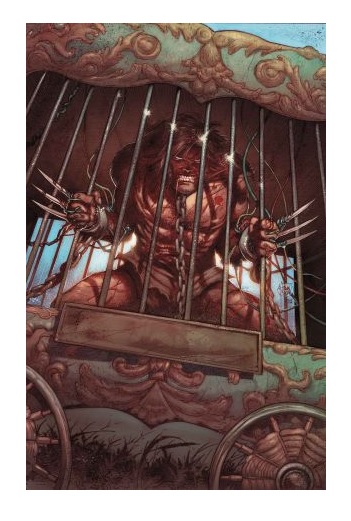
ORIGIN II #4
Writer: Kieron GillenArtist: Adam Kubert
Publisher: Marvel Comics
Reviewer: The Kid Marvel
ORIGIN II #4 picks up after Creed, Logan and Clara escape from Essex, with Clara trying to reintroduce Logan as a civilized human, which is not going very well and it seems as though the three have had to move around quite a bit because of Logan’s outbursts. So Clara attempts, once again as the book alludes to, to try and get Logan to open up with what’s wrong or what’s causing him so much pain, which flashes to the images of ORIGIN II #1, with Essex’s polar bear killing off the wolfpack he was living with and back to the actual ORIGIN’s comic, where Logan killed Rose and it’s still weighing heavily on him. Later on, Logan is having a bad dream, doing his usual tossing and popping claws in his sleep, waking Clara. So after they talk and Logan opens up a little, he makes some good use of the alone time between the two, totally nailing Creed’s sister and who basically sees everything. It doesn’t stay quiet for too long before Essex men find them and everything goes to crap.
Overall, the book’s plusses are very much the artwork and coloring between Adam Kubert and Frank Martin. The visuals are spectacular, and the two are really able to capture all the violence that goes into Wolverine stories, with lots of blood, claw-slashing and berserker rage. The high points of the art were the flashbacks and how they utilized the pictures to tell the story rather than dialogue. The same goes for the fight scenes, which are really just a brilliant display of artistic talent and art-based storytelling. There were so many scenes and pages that had zero dialogue, with the art doing all of the talking.
However, for the story itself, it’s definitely missing something. The writing is good for the dialogue, but the purpose of the story seems empty, especially if this is supposed to be only a five book series. I’m just not sure what exactly is supposed to cover this “unknown” story about Wolverine that is so vital or crucial to his backstory. With one issue left, I’m really not sure what is going to be covered in the last issue that makes this story so grand or important.
Other than the big picture, the book isn’t bad. It’s quite enjoyable if you like solo Wolverine stories, and I’d even say it would appeal to others interested in heavy action art-based comics. The same goes for the writing, which isn’t bad or awful--it’s just lacking that special whatever, setting it apart and adding to the Wolverine mythos, I mean, the series catchphrase was something along the lines of “you thought you knew the whole story”, and my question is now, what is so important that I’m supposed to know?
I’m hoping that the final issue can answer this question and tie in the rest a little better, maybe even finding that “it” part of the story that it needs, making it as important to Logan’s story as it’s been marketed--or maybe Marvel is just teasing me and making me spend more of my money I don’t need to; it’s not unlikely, if that’s true.
If you don’t mind the easy reading, simple story and like comic art, this is definitely worth the purchase and again, maybe issue five will end up tying this all together neatly enough for the whole series to stand out in the Wolverine mythos like I thought it would.
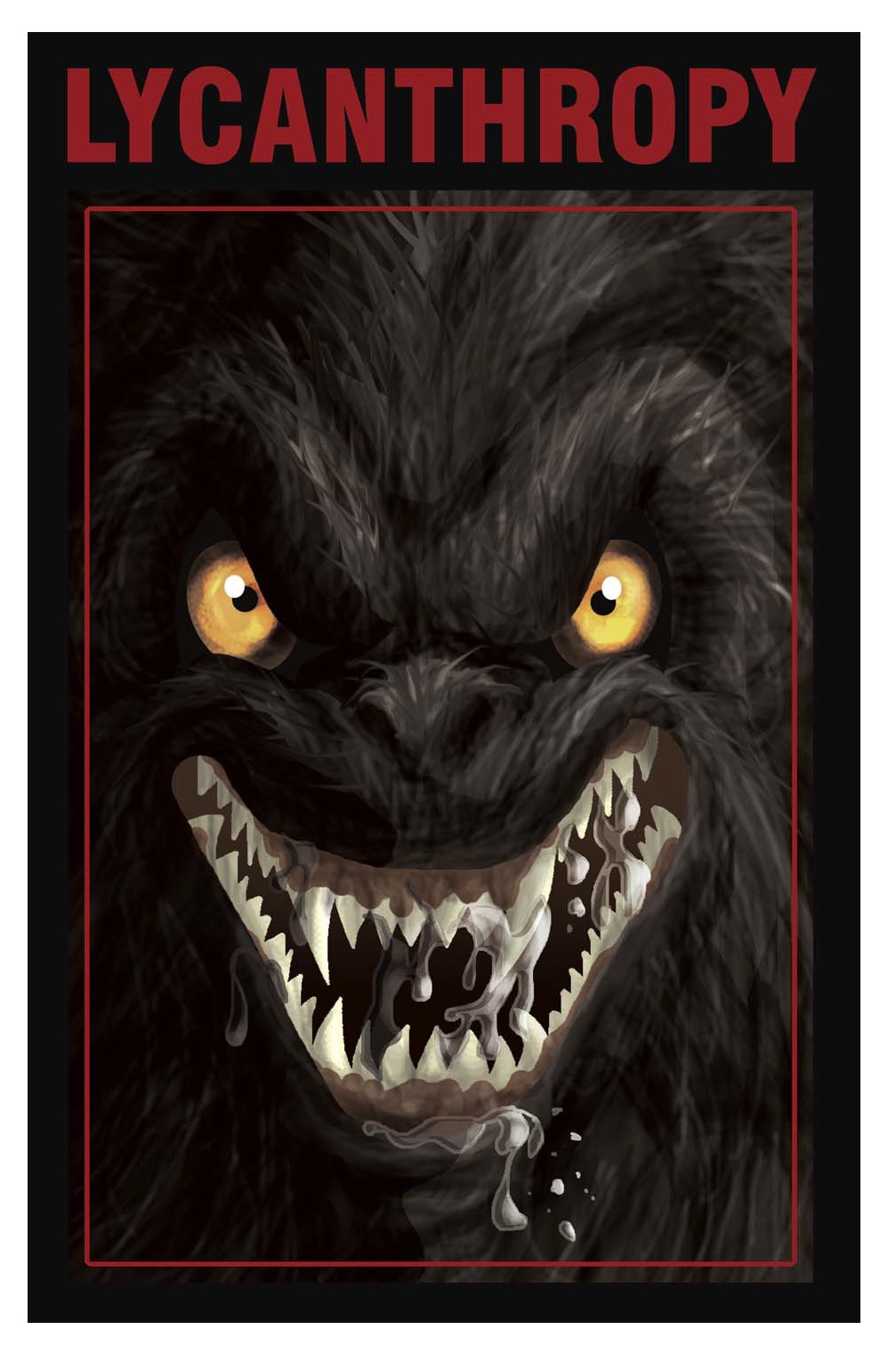 Indie Jones presents!
Indie Jones presents!LYCANTHROPY: WILD WEST WEREWOLVES Original Graphic Novel
Writer: Richard KellyIllustrator: Unlisted
Publisher: Self published
Reviewer: Ambush Bug
Coming from the standpoint of a critic, it’s difficult to review a polished, well-versed comic from one of the Big Two (and I scoff a bit by saying that, because there are plenty from those companies that are far from it) and a comic that is a dream realized from someone who is just starting out his or her career in comics. LYCANTHROPY: WILD WEST WEREWOLVES is an original graphic novel from such a creator.
Richard Kelly has written, self-produced, and self-published his own original graphic novel. In doing so, he should be proud no matter what is said, since this is an achievement 99% of the people out there have failed to do. Though the outcome is rather flawed, it is an accomplishment just that the book exists.
That said, I’d rather slip into the role of educator than harsh online critic here. The first thing Kelly should do is seek out someone with good editorial skills and run this book by them, because there are a lot of grammatical errors in this self-made book that could be easily changed. No matter how good your work is, if it lacks capital letters and proper punctuation, or has multiple misspellings, it’s not going to be received well (and I acknowledge the irony here, with this being AICN in which you are reading this advice, but it still applies).
Once that is done, the concept of “show, don’t tell” is one that needs to be understood by anyone wanting to have a career in the world of comics. With this being a visual medium, a trust should be formed between the writer and the artist. It’s a trust that doesn’t come easily, especially for a writer who may be worried about conveying his story in the proper manner, but it is a trust that is essential in telling sequential tales. It is often a difficult endeavor to hand one’s work over to someone else to translate, but if you are uncomfortable with that, maybe comics is not the right medium to venture into. Throughout most of this book, not only is there action in the scene, but there is also a caption describing that action. This is redundant. The caption should tell what isn’t obvious, not describe the action in the panel. What shows up in the panels in LYCANTHROPY are stage directions one tells an artist, not captions that occur in panel.
The third point is minor, but it will help quite a bit: read your dialog out loud. If it doesn’t feel comfortable, it’s not going to read that way either. While the dialog isn’t one of the main problems here, a second or third draft in and it could read a lot smoother.
All of that aside, there is some fun to be had with LYCANTHROPY: WILD WEST WEREWOLVES. The concept of werewolves in the Old West is an interesting one, and full of promise. If the writer trusted the artist (who is uncredited, yet does a decent job of making the werewolves look wild and chaotic) to tell the story instead of doubling down on the story and making it redundant, there could be something promising here. With a fun concept and some appropriately quirky indie art, LYCANTHROPY shows potential. Best of luck to Kelly for getting this one in the bag. Hopefully, some of the feedback will help in his next endeavor. For the rest of the readers, though, I can’t wholeheartedly recommend this to those who don’t read books outside of the well-polished Big Two (or the Big Six for that matter), but LYCANTHROPY: WILD WEST WEREWOLVES could be an interesting read for those interested in someone’s early attempts at comic booking.
Proofs, co-edits & common sense provided by Sleazy G
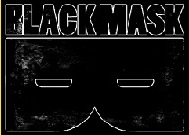 Find out what are BLACK MASK STUDIOS and OCCUPY COMICS here and on Facebook here!
Find out what are BLACK MASK STUDIOS and OCCUPY COMICS here and on Facebook here! Want more in all things Geek?
Want more in all things Geek?Check out PoptardsGo and on Facebook here!
Check out AICN COMICS on Facebook and Comixpedia!
